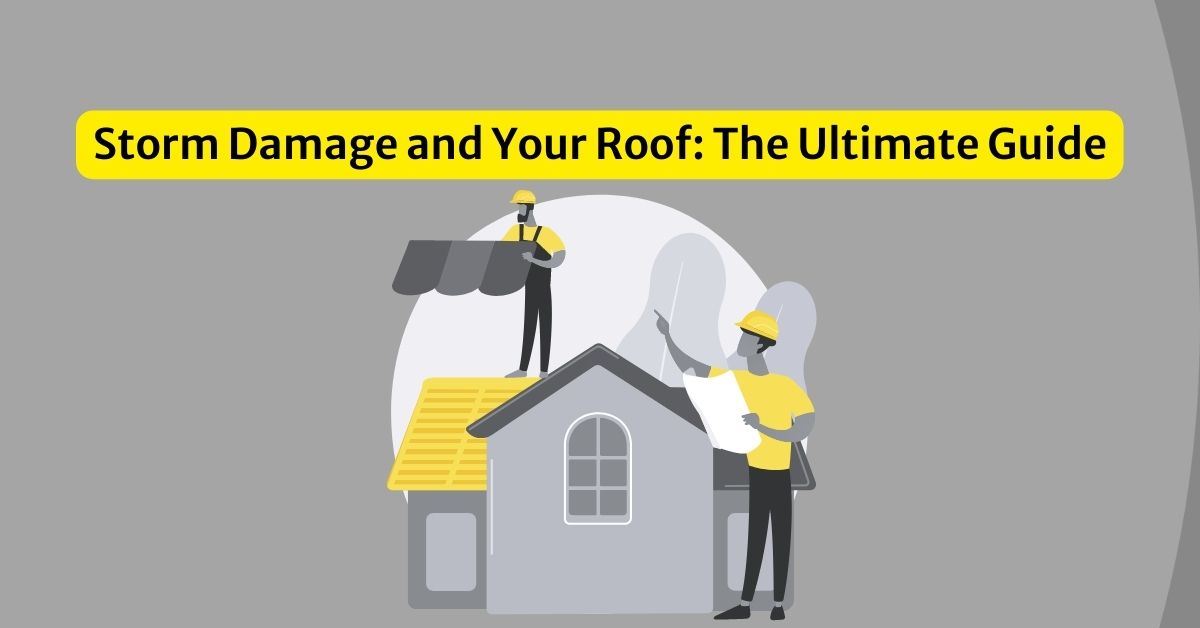
August 22, 2023
Storm Damage and Your Roof: The Ultimate Guide
Every year, countless homes are affected by storms, with roofs often taking the brunt of the damage. From torrential rain to gale-force winds, various elements can compromise the integrity of our roofs. Understanding the aftermath and knowing how to respond is crucial. This comprehensive guide will provide homeowners with in-depth knowledge on roof maintenance, damage identification, and preventive measures post-storm.
Understanding the Impact of Storms on Roofs
Storms can vary in intensity, but even a minor storm can cause significant damage to your roof. Here’s a breakdown of how different storm elements affect roofs:
- Wind: High winds can lift shingles, creating pockets of vulnerability where moisture and debris can enter.
- Rain: Prolonged heavy rainfall can exploit any weak spots in your roof, leading to leaks.
- Hail: These ice pellets can dent or crack shingles, leading to potential water damage.
- Debris: Storms can carry branches, leaves, and other debris that can clog gutters and downspouts, leading to water pooling.
What to Do with Your Roof After a Storm?
Post-storm, swift action is essential. Here’s a detailed approach:
- Safety First: Always prioritize safety. If the storm is ongoing, stay indoors. Once it’s safe, avoid climbing onto the roof. Instead, use binoculars for a preliminary inspection from the ground.
- Initial Inspection: Look for obvious signs such as missing shingles, fallen branches, or damaged gutters.
- Contact a Professional: Engage a roofing expert, especially one specializing in storm damage roof repair near me. They can provide a detailed roof storm damage checklist and assess the damage’s extent.
- Document the Damage: Take clear, high-resolution photographs of any damage. This documentation is vital for your storm damage roof insurance claim.
- Temporary Fixes: While awaiting professional repair, consider temporary measures like tarping to prevent further damage.
What to Look for in a Damaged Roof?
Identifying signs of storm damage to roof early can save you from extensive repairs later. Here’s an expanded list of indicators:
- Missing or Damaged Shingles: Shingles can be torn off or damaged by high winds. Look for gaps or shingles that appear curled, cracked, or dented.
- Leaks: Check your attic and interior ceilings for signs of water intrusion. Wet insulation, mold, or a musty smell can indicate a leak.
- Gutters and Downspouts: Ensure they are intact, not clogged with debris, and are directing water away from your home’s foundation.
- Flashing: This material, often metal, seals roof transitions. If it’s bent, detached, or rusted, it’s a sign of damage.
- Granules in Gutters: If your asphalt shingles are shedding granules, which often end up in gutters, it’s a sign of potential damage.
How Do I Protect My Roof from Damage?
A proactive approach can significantly reduce the risk of storm damage. Here’s a detailed preventive strategy:
- Regular Maintenance: Schedule bi-annual roof inspections. Routine checks can help identify potential weak spots before they become major issues.
- Trim Trees: Overhanging branches can break and fall on your roof during a storm. Regularly trim trees near your home.
- Secure Loose Objects: Anchor or store away items like patio furniture, which can become projectiles in a storm.
- Upgrade Roofing Materials: Invest in storm-resistant roofing materials. These materials are designed to withstand the elements better than standard options.
- Gutter Guards: Installing gutter guards can prevent debris from clogging your gutters, ensuring efficient water flow.
How Do You Describe Roof Damage?
Accurately describing roof damage can expedite your storm damage roof replacement or repair process. Here’s a more detailed guide:
- Type of Damage: Specify the damage type – structural, water, cosmetic, or a combination.
- Extent: Describe if the damage is localized or widespread. Measure the affected area if possible.
- Appearance: Use descriptive terms like “buckling,” “curling,” “blistering,” or “punctured” to detail the damage.
- Cause: Was it wind, hail, fallen debris, or a combination? Being specific can help professionals assess repair needs.
Conclusion
Storms are a natural occurrence, but their aftermath doesn’t have to be a nightmare. With the right knowledge and a proactive approach, homeowners can effectively navigate the challenges storms present. Whether it’s identifying roof damage from storm or understanding types of roof storm damage, this guide serves as a comprehensive resource.
At Family First Exteriors, we understand the importance of a safe and secure roof. Our team of experts is dedicated to ensuring your home remains protected, come rain or shine. If you’ve experienced storm damage or want a professional assessment, reach out to us. Remember, with Family First Exteriors, you’re not just getting a service; you’re joining a family that prioritizes your safety.
